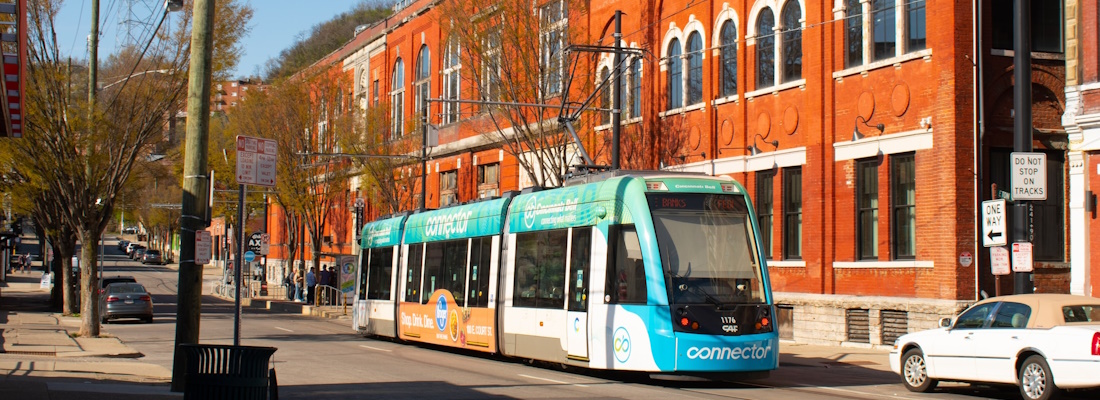Situated along the Ohio River, Cincinnati proudly sits at the heart of a tristate area encompassing Ohio, Kentucky, and Indiana. New arrivals in the city have a vast diversity of neighbourhoods, each with its own distinct architecture and history, spanning a wide price range from the affordable to the upscale.
Factors to consider when deciding on a home in the Queen City include proximity to one’s workplace, access to transport links and, for those with children, good local schools. In addition, new arrivals will need to consider lifestyle preferences – such as being close to Cincinnati's vibrant nightlife and cultural venues or access to the city’s numerous parks and the scenic Ohio River waterfront.

Areas and suburbs in Cincinnati
Cincinnati is home to a diverse array of areas and suburbs, each boasting its unique charm, from the historic charm of Over-the-Rhine to the upscale allure of Hyde Park. Among these, Downtown Cincinnati is the economic and cultural heart of the city, where skyscrapers tower above historic buildings, and the streets buzz with life from morning until night. This area is an ideal choice for those who thrive in a fast-paced urban environment. Housing here consists mainly of apartments and condominiums, with a higher price tag due to the central location.
For a quieter, suburban experience, Oakley and Madisonville, nestled to the east, serve as tranquil retreats from the downtown hustle, each offering a unique blend of Cincinnati charm. These neighbourhoods have a mix of single-family homes and apartments suitable for both singles and families. With its trendy shops, eateries and charming square, Oakley provides a blend of urban and suburban living. Madisonville, on the other hand, is known for its historic homes and a more laid-back lifestyle, making it a good choice for families or those looking for a slower pace.
West Chester, situated north of Cincinnati, is a fast-growing suburb known for its excellent schools, modern amenities and various housing options. It’s an ideal area for families, offering a host of recreational activities and community events. On the west side, the neighbourhoods of Price Hill and Delhi offer a sense of community and history, with more affordable housing options and a slower pace of life. These areas are becoming increasingly popular among young families and first-time homebuyers.
Read more about Areas and Suburbs in Cincinnati.
Types of accommodation in Cincinnati
The types of accommodation in Cincinnati range from high-rise apartments in the downtown area to quaint single-family homes in the suburbs. The city offers a broad spectrum of housing styles, including modern condominiums, historic townhouses and sprawling suburban estates.
The city's skyline is dotted with high-rise apartments and condominiums, perfect for individuals or small families who thrive in Cincinnati's urban heart. They often come with modern facilities like fitness centres, communal lounges and sometimes even a concierge service.
On the other hand, the suburbs of Cincinnati provide a variety of single-family homes. These range from modest ranch-style houses to larger multi-story homes, suitable for larger families. The suburban areas also typically boast communal amenities such as parks, local shopping centres and schools.
For those looking for a middle-ground, townhouses and duplexes offer a harmonious blend of urban and suburban living, embodying Cincinnati's diverse lifestyle options. They offer more space than apartments while still relatively close to the city centre.

Finding accommodation in Cincinnati
Prospective residents should delve into Cincinnati's property market well before making their journey to the Queen City. The internet is a great place to get the search started – websites, forums and blogs offer advice and insight into the experiences of other expats. Real estate websites and property portals are also helpful, as they give expats a good idea of what is available and the costs of renting property in different parts of Cincinnati. Once in Cincinnati, the classifieds sections of the local newspapers can also be helpful.
As residents are typically unfamiliar with the property market when first arriving in their new city, the best bet is to consult a real-estate agent. These professionals have intimate knowledge of the property market and can often provide access to a broader range of properties to find a place that meets an individual’s needs.
Renting accommodation in Cincinnati
Most people relocating to Cincinnati opt to rent property rather than buy, at least initially. There are plenty of furnished and unfurnished rental options available in Cincinnati.
Making an application
Once new arrivals have found a suitable property, the first step is to submit an application form. Agents or landlords may carry out credit checks, and it’s wise to have references from previous landlords or one’s employer at hand, as these may also be requested. It’s also advisable to prepare a rental resume that details one’s rental history, employment status and personal references, which could help make a solid first impression on potential landlords.
Leases, costs and fees
Traditionally, security deposits in Cincinnati are equivalent to a month’s rent, paid before the start of the lease, along with the first month of rent, although in some cases, this can take the case of renters' insurance instead of a security deposit.
The typical length of a lease in Cincinnati is 12 months. At the end of the lease, the tenant and landlord can either end or renew it. It is possible to break a lease early, and in this case, landlords are required to make a reasonable attempt to find a suitable replacement tenant. If one cannot be found, the original tenant will be liable to continue paying rent until the lease expires.
Check out Accommodation in the USA for detailed information about the country’s rental processes.

Utilities in Cincinnati
Before signing a lease, tenants should establish what is included in the rental cost. Essential utilities like water, gas, and electricity are typically separate from the rental cost in Cincinnati and are typically an additional expense for the tenant.
Electricity
Electricity in Cincinnati is supplied by several providers, with Duke Energy being the primary provider. It’s prudent to compare rates from different suppliers to find the most economical option.
Tenants can set up an electricity account online or over the phone before moving into their new home, ensuring a seamless transition.
Gas
Gas services are also primarily provided by Duke Energy, among others. As with electricity, it’s advisable to compare rates and choose a provider that fits the household budget.
Setting up a gas account can also be done online or over the phone, with customer service readily available to assist with any queries.
Water
Water services in Cincinnati are provided by the Greater Cincinnati Water Works (GCWW). New tenants can easily set up a water account online or visit the GCWW office in person.
It’s important to familiarise oneself with the water rates and the billing cycle to manage the utility expenses efficiently.
Bins and recycling
Waste disposal and recycling services in Cincinnati are managed by the city’s Department of Public Services. Residents are provided with bins for rubbish, recycling and yard waste. The city has a weekly collection schedule that residents should be aware of.
Recycling is encouraged, and the city offers a variety of recycling programmes to promote environmental sustainability. Additional information on waste disposal and recycling can be found on the City of Cincinnati’s official website.
Residents can schedule bulk item collection or hire private waste removal services for large items or excessive amounts of waste.
Useful links










